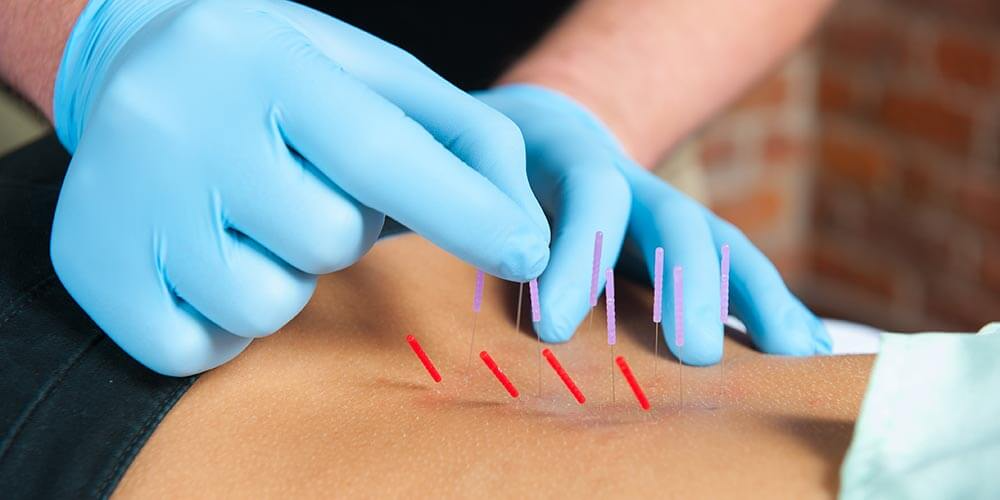What is dry needling?
Dry needling is a technique performed by a physical therapist to reduce pain, muscle tension and improve mobility. The technique uses a “dry” needle, one without medication or injection, which is inserted through the skin into trigger points of muscles, tendons, ligaments, and/or fascia.
Dry needling is not acupuncture. Acupuncture is a practice based on traditional Chinese medicine and performed by acupuncturists. Dry needling is based on the modern scientific study of muscles and nerves to help the body’s ability to reduce pain and ultimately heal.
What is a trigger point?
A trigger point is a sensitive and tender area within a muscle, it’s like a tiny cramp within the muscle itself. When a trigger point is compressed or touched, it may cause pain in other parts of the body. This is known known as referred pain and is a sign that the trigger point needs treatment.
What kind of needles are used?
Dry needling involves a sterile, ‘acupuncture type’ needle that penetrates the skin and stimulates trigger points in muscular and connective tissues. The needle allows a physical therapist to target deeper tissues that are not manually palpable.
Conditions treated
Dry needling is used in a variety of musculoskeletal conditions including headaches, neck pain, back pain, tendinitis, muscle spasms, sciatica symptoms, hip or knee pain, muscle strains, fibromyalgia, tennis or golfer’s elbow, overuse injuries, TMJ, piriformis syndrome, Achilles tendinitis, plantar fasciitis, shoulder pain, and more.
*Dry needling often speeds up the recovery time and allows for a quicker recovery process.
Is it painful?
For most people, there is little to no discomfort with the insertion of the needle. When the needle is inserted into a trigger point or a desired area, the patient may feel a tooth ache sensation, small pinch, or quick sting sensation. These sensations are normal and even desirable. There may also be a “twitch response” of the muscle which is often not painful.
Side-effects
The treated area may be sore for 24-48 hours after dry needling is performed. The soreness can be minimized with heat and drinking plenty of fluids. Needle insertion may cause a brief nervous system response such as drowsiness, tiredness, or dizziness.
How long does it take for procedure to work?
For some patients, the effect is immediate with an increase in motion and decrease in pain and inflammation. Others experience these positive results the next day. Typically, it takes about six sessions for a lasting positive effect.
What is the overall goal of dry needling?
Dry needling creates the release of trigger points. This results in pain relief, improved range of motion and restored optimal function. Current research supports dry needling in improving pain control, reducing muscle tension, and restoring the normal communication between the nerves and muscles. Dry needling helps to enhance your body’s natural healing ability without relying on medications.
If you think you’d benefit from Dry Needling call our office at 847-854-0196 today and ask to schedule a Free Discovery Visit.


